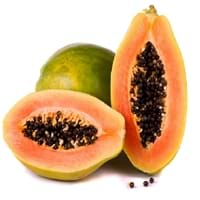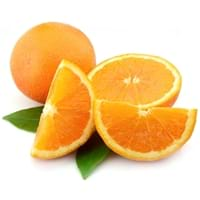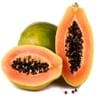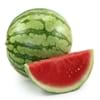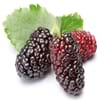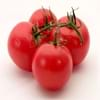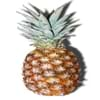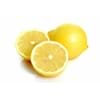Health Benefits
Arthritis prevention, Asthma treatment, Cancer prevention, Heart care, Prevents macular degeneration, Prevents rheumatoid
Arthritis treatment, Cancer prevention, Heart care
General Benefits
Anti-inflammatory properties, Boosts immune system, Digestive aid, Healing of wounds, Maintains healthy cholesterol level, Strengthens bones
Anti-inflammatory properties, Cures cough, Cures fever, Digestive aid, Healing of wounds, Maintains healthy cholesterol level
Skin Benefits
Anti-aging benefits, Hydrates skin, Skin revitalization, Treatment of acne, Treatment of dark spots
Anti-aging benefits, Brightens and lightens complexion, Reduces wrinkles, Treatment of dark spots
Hair Benefits
Good conditioner, Promotes longer and healthier hair, Softening mask, Treatment of dandruff
Promotes longer and healthier hair, Protects hair, Rejuvenates scalp, Shiny hair
Allergy Symptoms
Abdominal pains, Carotenemia on excessive consumtion, Latex Allergy
Abdominal cramps, Hives, Itching, Nausea, Wheezing
Side Effects
Allergic reaction, Skin problems, Possibly unsafe during pregnancy
Allergic reaction, Skin rash, Possibly unsafe during pregnancy
Best Time to Eat
As a snack in the late afternoon, Don't consume at night and before bed, Don't eat after meal
As a snack in the late afternoon, Eat the fresh ones, avoid mixing with any other foods, don't eat after meal., Morning time (before lunch), Strictly avoid empty stomach
Vitamin B5 (Pantothenic Acid)
Vitamin C (Ascorbic Acid)
Vitamin K (Phyllochinone)
Calories in Fresh Fruit with Peel
Not Available
Not Available
Calories in Fresh Fruit without Peel
Calories in Frozen Form
Not Available
Type
Melon, Tree fruit
Citrus
Season
All seasons
Winter
Varieties
Coorg Honey Dew, Pusa Dwarf, Pusa Giant, Pusa Majesty, Pusa Delicious, Pusa Dwarf, Solo, Ranchi, Taiwan-785 and Taiwan-786
Clementine, Dancy, King Mandarin, Murcott, Ponkan, Robinson, Satsuma and Sunburst
Color
Orange, Yellow
Orange
Inside Color
Orange
Orange
Taste
Luscious, Sweet
Sweet-Sour
Origin
Mexico, Central America
South-Eastern Asia
Grows on
Trees
Not Available
Soil Type
Rocky, Sandy, Well-drained
Well-drained
Climatic Conditions
Warm, Without frosts
Sunny
Facts about
- Papaya seeds show contraceptive effects in male monkeys.
- Their seeds are used as a replacement for black pepper in some nations due to peppery taste.
- Papaya is known by funny names like paw paw or papaw and the mamao.
- It is known by another name ' Mandarin'.
- Oil extracted from its peel is used in various skin and hair care products.
- Tangerines is also known as the ‘Christmas Orange’ because it is used to stuff kids' stockings..
Spirits
Yes
Not Available
Cocktails
Yes
Not Available
Other Countries
Brazil, Indonesia, Mexico, Nigeria
Brazil, Iran, Italy, Japan, Korea, Morocco, Spain, Turkey
Top Importer
United States of America
China
Top Exporter
Mexico
Spain
Botanical Name
Carica papaya
Citrus reticulata
Synonym
Not Available
Citrus clementina or Citrus nobilis
Subkingdom
Tracheobionta
Tracheobionta
Division
Magnoliophyta
Magnoliophyta
Class
Magnoliopsida
Magnoliopsida
Subclass
Dillenhidae
Rosidae
Order
Brassicales
Sapindales
Family
Caricaceae
Rutaceae
Species
C. papaya
C. reticulata
Generic Group
Papaya
Citrus fruit
Difference Between Papaya and Tangerine
We might think that Papaya and Tangerine are similar with respect to nutritional value and health benefits. But the nutrient content of both fruits is different. Papaya and Tangerine Facts such as their taste, shape, color, and size are also distinct. The difference between Papaya and Tangerine is explained here.
The amount of calories in 100 gm of fresh Papaya and Tangerine with peel is Not Available and Not Available and the amount of calories without peel is 43.00 kcal and 53.00 kcal respectively. Thus, Papaya and Tangerine belong to Low Calorie Fruits and Low Calorie Fruits category.These fruits might or might not differ with respect to their scientific classification. The order of Papaya and Tangerine is Brassicales and Sapindales respectively. Papaya belongs to Caricaceae family and Tangerine belongs to Rutaceae family. Papaya belongs to Carica genus of C. papaya species and Tangerine belongs to Citrus genus of C. reticulata species. Beings plants, both fruits belong to Plantae Kingdom.
